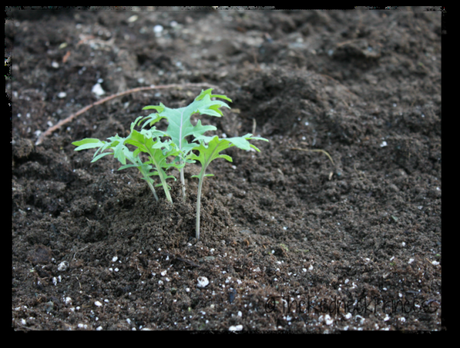
Today we are going to talk about growing Kale, because seriously, anyone can do it. It is one of those vegetables that will grow in all weather, like a weed. I actually can’t believe that I haven’t grown it before.
Ok, so here is what you need to know…
Types of Kale:
There is no way I am going to list every single kind of Kale on the planet, so I will list the ones that grow well in B.C. and that we have access too, if you live somewhere else, go to your local garden center and they will set you up with what works in your specific area :)
- Lacinato~65 days. This is so far my personal favorite, it has texture more like a spinach and works great when making Kale chips or using it in smoothies.
- Rainbow Lacinato~65 days. This is a cross between Lacinato and cold hardy Redbor, I am trying this one from seed and I have planted it a little later than the others.
- Redbor~50 days. A tightly curled dark red kale, striking color makes it a beautiful addition to salads.
- Red Russian~50 days. This variety is very disease resistant, with a flat green leaf and lovely purple stems. It is a heirloom variety that was brought to Canada by Russian traders in the late 1800′s. It is also very high in vitamins and minerals.
- Winterbor~ 60 days. This is a Scottish Kale that grows very large. It has thick, very curly, ruffled blue green leaves. This is the hardiest winter variety.
- Improved Siberian~ 50 days. Heavily frilled with large leaves, these plants are only about 12″-15″ tall they are short but stocky!! Leaves are bright blue green.
- Scots Blue Curled~ 50-80 days. This is a slow to bolt Scottish Kale that is also a low growing variety at about 12″ to 16″ tall. It is especially tender after a light frost.
Growing your Kale:
- Kale is a hardy biennial (it takes two years to go to flower and complete its life-cycle) but it is usually grown as an annual.
- If you’re planting during the cool season, plant your kale in the full sun.
- If you are planting during the warm season, or in a warmer climate, plant kale in partial shade.
- Kale enjoy living near plants such as beets, celery, herbs, onions and potatoes, but does not enjoy being around beans, strawberries or tomatoes.
- Kale also prefers well-drained, moist (but not constantly wet) soil of average fertility. Kale does not like soil that is too rich in nitrogen, so don’t overdo the manure or compost. If your soil is too acid, try adding some wood ash to sweeten it. Too light of a soil, sandy soil or very heavy soil will affect the flavor of the kale so try to amend it if you have any of these problems.
- You can start seeds inside, but in our British Columbia climate they are really easy to start outside about two weeks before the last expected frost. In the summer plant more in about mid July. No matter when you plant, the soil temperature must be at least 4° degrees or higher for good germination, optimal soil temps are between 10° and 30°.
- Germination should take about 7-10 days.
- If you are planting from seed, germination is generally fairly high, plant seeds with lots of room around each plant, about 24″ x 24″.
- Use a good organic fertilizer when you plant, you want a mix of bone meal, kelp meal, rock dust and maybe some fish meal and don’t forget the lime (this helps with keeping your plants club root free, I add extra, you can also add lime to the bed you are planting the kale in three weeks before if you are organized…I unfortunately, am not…) .
- Keep your kale well watered.
- Fertilize your plants every six to eight weeks to keep them growing their best.
- I also plan on using a liquid seaweed fertilizer once a month or so.
Harvesting your Kale:
- You can begin to cut individual leaves off the kale when the plant is 8 to 10 inches high, starting with the outside leaves first.
- It will be about 50-70 days until you can harvest your kale.
- If you need to harvest the whole plant, cut it off about 2 inches from the bottom and new leaves will begin to form again in a few weeks.
- Fresh kale stores really well in the fridge, so pick the leaves when they are young and tender and keep them in the fridge for up to a week.
Trouble shooting your Kale:
- Cabbage loopers, Cutworms and Cabbage worms like to eat your Kale before you can, slugs also love it, I use Safer’s slug bait for the slugs…kale is fairly resistant to the other predators, keep your plants well fed, watered and healthy and they should survive the little beasts. A dusting of Sevin dust around the plants when they are young will prevent anyone taking them out when they are little. I don’t like to use it when the plants are close to harvest, but it has saved many of my little seedlings :)
I have approximately 15 kale plants planted in my garden now. I will be able to supply most of Campbell River in about two months. In that time I will be researching all the things to do with kale. I will keep you informed…I still have five more days to go, who knows what I will find thanks to Pinterest :)
Follow me on Pinterest~The Kale page to keep up!!!
Happy Friday all xox

